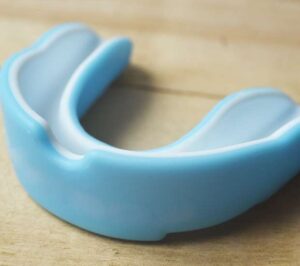Dental bonding has a variety of uses in cosmetic dentistry, and it is one of the more affordable ways to improve the appearance of a person’s teeth. These treatments involve applying a putty-like composite directly to teeth being restored. These composites are color-matched with the person’s real teeth so repairs made blend in.
How dental bonding works
Also known as composite bonding, the composites used for the treatment are mixtures of glass and composite. Below are some issues that dental bonding is often used to fix:
The process
Composite bonding is one of the least invasive treatments used in cosmetic dentistry and it does not require the removal of enamel. The dentist simply uses an etching solution to roughen up the tooth so the composite adheres to it better. It is a reversible treatment, so the patient can still explore other treatment options like crowns and veneers in the future. Local anesthetics are usually not used during the application of composites unless the treatment is being used to fill cavities.
Once the etching solution has dried up, the dentist will start applying composites to the tooth layer by layer. Each layer is shaped as desired before being hardened with a curing light. The process is repeated over and over until the desired look is achieved.
There is no recovery period after getting a tooth restored with dental bonding. Patients are advised to avoid eating or drinking things that stain teeth, like coffee, for the first few days after treatment. Composites are more susceptible to staining than real teeth.
Restore your teeth with dental bonding
Composite bonding gives you a non-invasive way to improve the aesthetics of your teeth. It gives you instant results, so you walk out of the clinic with your smile restored. Call or visit our Tamarac clinic to set up an appointment.
Request an appointment here: http://www.thedentalplaceoftamarac.com or call The Dental Place of Tamarac at (954) 271-8072 for an appointment in our Tamarac office.
Check out what others are saying about our dental services on Yelp: Dental Bonding in Tamarac, FL.
Related Posts
Dental bonding is one of the most versatile and minimally invasive restorative and cosmetic dental procedures. Dental bonding is the go-to procedure for many patients looking to fix imperfections or enhance their smile, from enhancing the appearance and shape of teeth to repairing damaged enamel. Whether you are new to cosmetic dentistry or considering touch-ups…
Dental bonding is a reversible dental procedure that involves using a composite resin material to rebuild and restore teeth. The composites used can be matched with the color of the patient’s teeth, allowing restorations made with them to blend in.Dental bonding has cosmetic and restorative uses in dentistry. Unlike other popular restorations dentists use, its…
A dental bonding procedure is a treatment that involves applying tooth-colored resin and using a special light to harden it. It is primarily a cosmetic procedure but may also be used to treat some dental conditions.Many dentists use dental bonding for small cosmetic alterations, short-term corrections of cosmetic issues, and repairing teeth in areas with…
Dental bonding is a common dental service that many dentists offer right in their offices. What exactly does dental bonding involve? Bonding, also known as tooth veneers, involves applying a special resin to the front of your teeth to make them look whiter and brighter. Your dentist will take an impression of your teeth during…
We are committed to providing quality healthcare to families located in the Tamarac area and treat patients of all ages.
The Dental Place of Tamarac
7300 W McNab Rd Ste 115
Tamarac, FL 33321
Phone: (954) 271-8072
Book Your Appointment Today!





